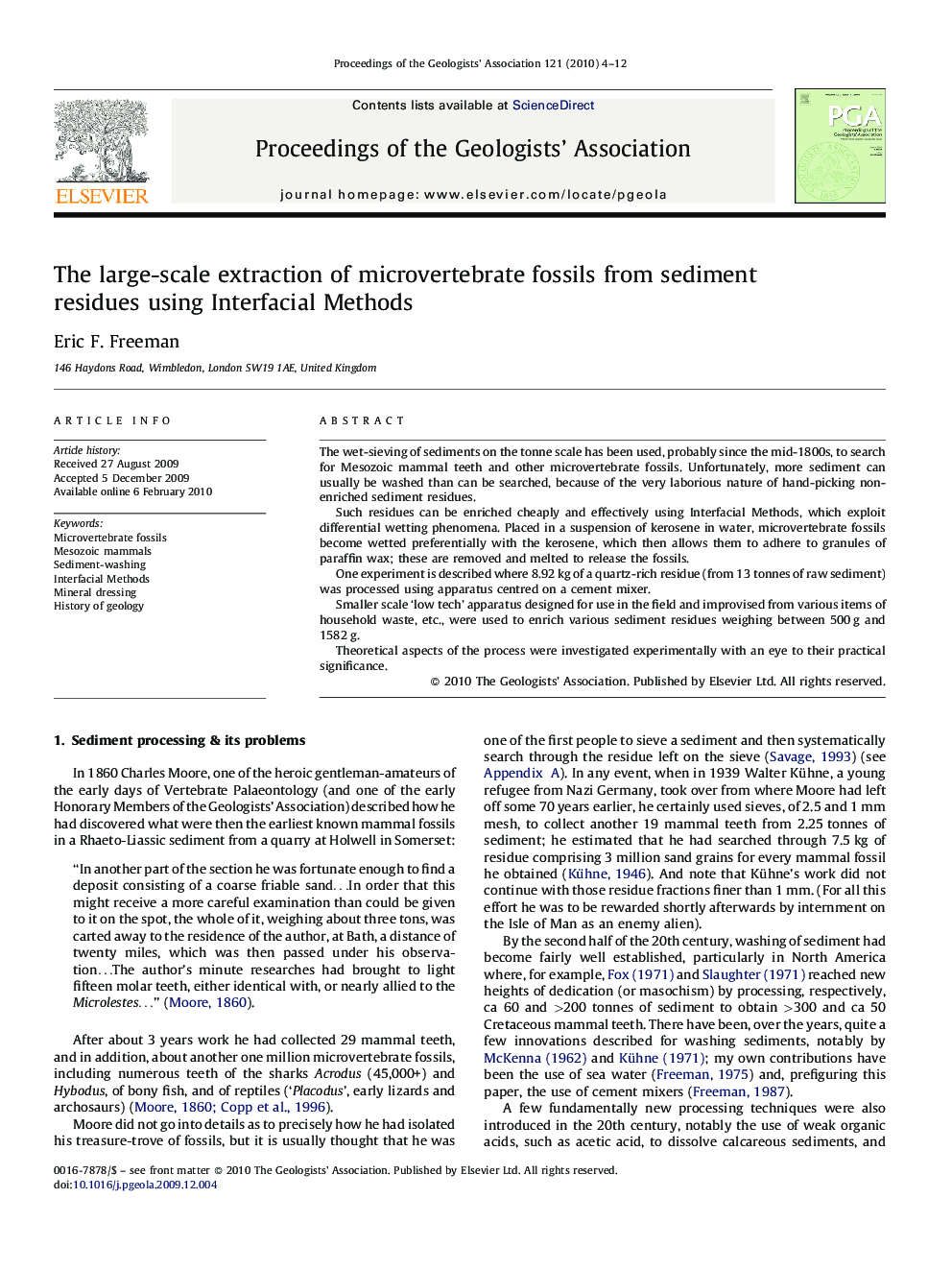| Article ID | Journal | Published Year | Pages | File Type |
|---|---|---|---|---|
| 4735106 | Proceedings of the Geologists' Association | 2010 | 9 Pages |
The wet-sieving of sediments on the tonne scale has been used, probably since the mid-1800s, to search for Mesozoic mammal teeth and other microvertebrate fossils. Unfortunately, more sediment can usually be washed than can be searched, because of the very laborious nature of hand-picking non-enriched sediment residues.Such residues can be enriched cheaply and effectively using Interfacial Methods, which exploit differential wetting phenomena. Placed in a suspension of kerosene in water, microvertebrate fossils become wetted preferentially with the kerosene, which then allows them to adhere to granules of paraffin wax; these are removed and melted to release the fossils.One experiment is described where 8.92 kg of a quartz-rich residue (from 13 tonnes of raw sediment) was processed using apparatus centred on a cement mixer.Smaller scale ‘low tech’ apparatus designed for use in the field and improvised from various items of household waste, etc., were used to enrich various sediment residues weighing between 500 g and 1582 g.Theoretical aspects of the process were investigated experimentally with an eye to their practical significance.
